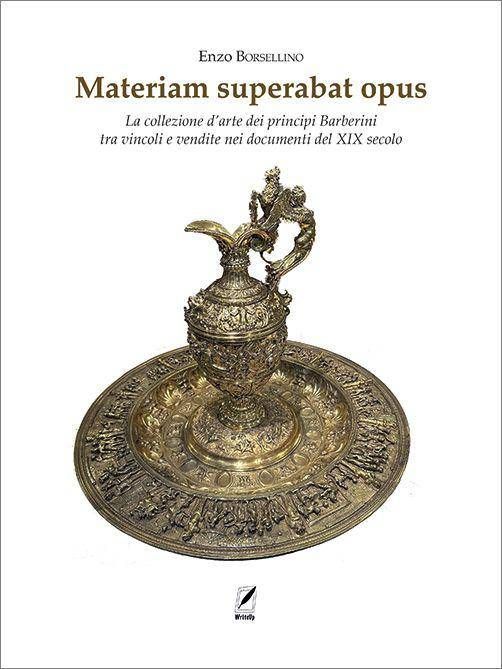“Materiam superabat opus” (ie “work won the matter”) is a Latin phrase taken from Ovid’s metamorphosis, which gives the title to the new essay by Enzo Borsellino presented this afternoon in Rome at the Marco Besso Foundation, published by the Writeup Books editions. Together with the author, Cristina Galassi, director of the School of Specialization in Historical-Artistic Heritage of the University of Perugia, Paolo Coen Ordinary of Museology and Art Critic of the University of Teramo, Donato Tamblè professor of Archival and History of Degliarchive (school of archival, paleography and diplomat of the State Archive in Rome and Institute of Restoration Rome) intervene; Giacomo Cardinali Help-Scriptor and Commissioner of the Permanent Exhibition Room of the Vatican Apostolic Library. Borsellino was a professor of museology and history of collecting and art history at the Universities of Rome La Sapienza, of Rome Tre, of L’Aquila, Santiago del Chile and Pittsburgh (PA-USA).
“The phrase of the Latin author wants to consider the creative genius of the artist higher than the venal value of the matter of the work of art – explains the professor to Adnkronos – it appears on a jug with his silver plate historical, now exhibited at the Metropolitan Museum in New York. It was not known that the two precious objects, owned by the Barberini family and placed on the antique market in the early 1900s, had been purchased in 1911. As a Welcome work Cellini from the rich American banker and collector John Pierpont Morgan, then donated to the American Museum.
Who were the Barberini? “Originally from Barberino Val d’Elsa in Tuscany, they were a noble family of mercantile origin transferred first to Florence and then to Rome where, with the appointment of Maffeo (1568-1644) to the papal seat in 1623, they acquired an unparalleled political and economic power. The Roman exhibition of 2023 on the papacy Barberini wanted to celebrate the fourth centenary of that election and showed how important were the Barberini, benefited by papal nepotism, for history, religion, culture and art in Rome in the seventeenth century “. (follow)
A noble Florentine family who gave a pope to Rome
“In the catalog of the 2023 exhibition it is written that the bronze bust of Urban VIII made by Gian Lorenzo Bernini entered 1858 in the Corsini collection of Florence. Knowing the history of the Corsini collection well – the professor had been the figure, so I had appeared doubtful. So I started some research on the Barberini in the 1800s and I discovered that in 1882 the bust was still the Barberini. Open an unexpected study field on the collection of which the current volume constitutes a first result, with the focus on a lesser known figure of the family, Prince Francesco Barberini (1772-1853) and with the commented edition of an important inventory of the paintings existing in 1844 in the palace at the four fountains commissioned by him. A working group on this issue, since the documentary material to be analyzed and studying is vast “.
Borsellino has numerous publications (articles, monographs, essays and curatele) on history of art, architecture, history of protection and restoration of cultural heritage, history of Italian and foreign art collections and museology. Is that of Barberini’s important collection? “The various members of the family have contributed to promoting culture, figurative arts and science; and in any case the trial of Galileo Galilei accused during the papacy Barberini of heresy and forced to the Abitua for his philosophical-scientific theories” is also remembered in the catalog of the 2023 exhibition of Galileo “.
Finally, in the artistic field “the various members of the family followed several tendencies of taste, expressed in the commission or in the purchase of different works of ancient and modern art, held united – a few dispersion in the second half of the 1700s – until the beginning of the nineteenth century, when they were divided between the two branches of the Barberini and the Colonna of Sciarra, thus starting a slow dispersion process”.
